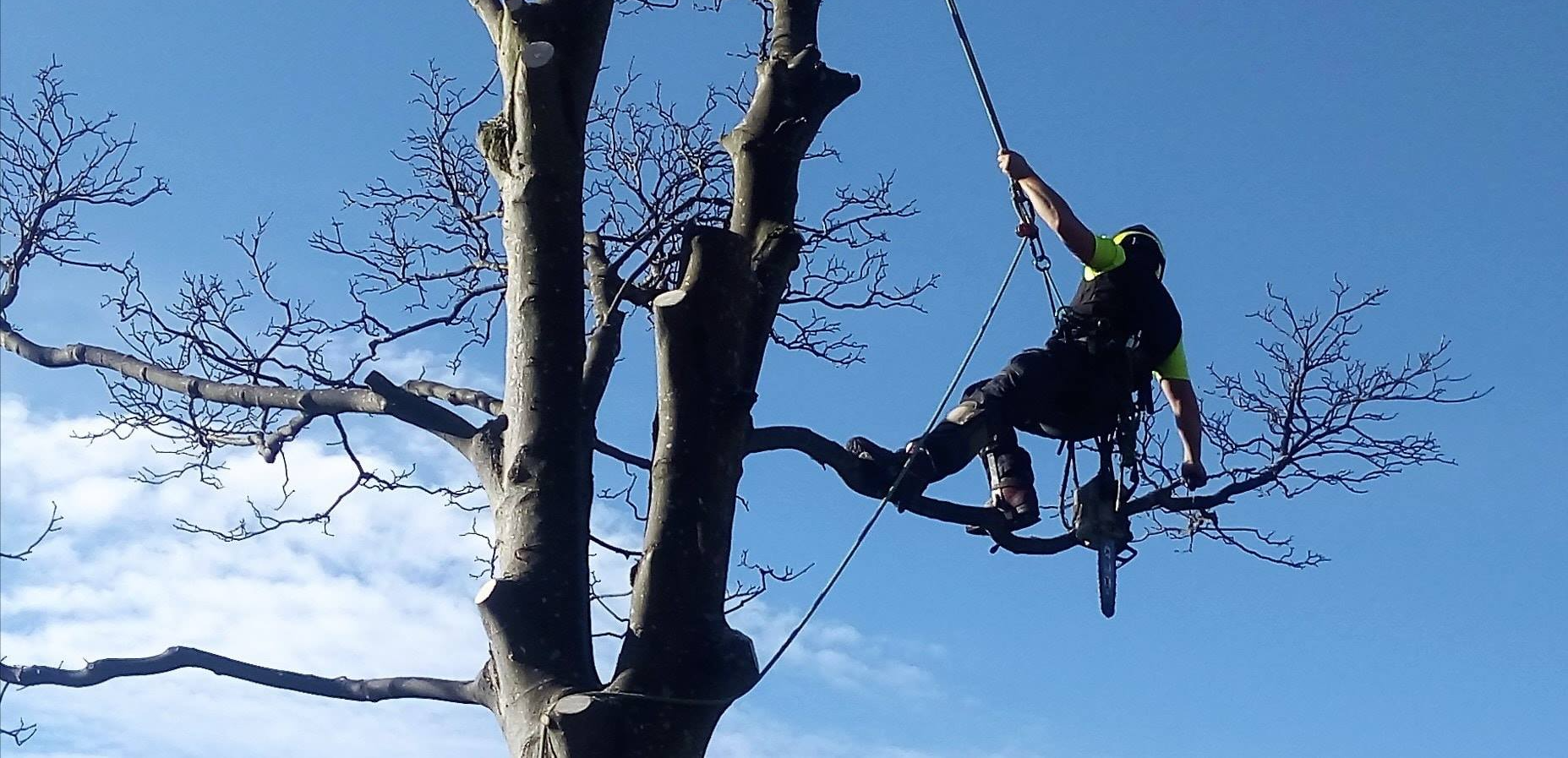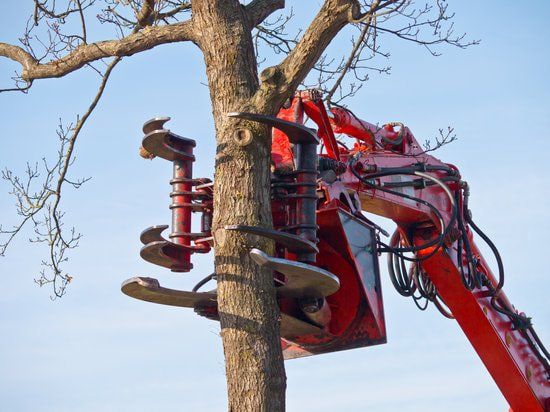Glasgow Trees
Deadwood Removal Service
Deadwood Removal Glasgow
Our Glasgow-based deadwooding service offers fast and reliable removal of dead, decaying, and potentially dangerous trees. Our experienced team will take care of all the necessary cutting, trimming, and cleaning up to ensure that your property maintains a safe environment for everyone. From removing damaged or diseased branches to creating an attractive landscape in your garden or commercial land, we have the skills and equipment to make sure your tree is healthy and aesthetically pleasing.
We understand that trees are part of our environment, so we work hard to make sure they remain healthy while still following safety regulations. By removing any deadwood or diseased wood from a tree, we can help prevent it from becoming weakened or hazardous. We also provide advanced pruning techniques in order to help promote healthy growth and extend the life of your tree.
At our Glasgow deadwooding service, we use only high-quality equipment that is designed for precision and safety. We are also a fully insured company so you can be rest assured that any work we do will be done with care and attention to detail. Our team of experienced tree surgeons and arborists will assess the health of your trees before offering suggestions on how best to maintain them in order to ensure they remain strong and healthy for years to come.
If you’re looking for a reliable deadwooding service in Glasgow, then make sure you get in touch with us today. Our friendly staff is always on hand to answer any questions or queries you may have regarding our tree services, and we’ll be more than happy to provide you with a free, no-obligation quotation. We look forward to hearing from you soon!
What is Deadwooding
Deadwooding is a pruning process that involves strategically removing dead or dying branches from a tree. This helps improve its overall structure by eliminating weak or diseased limbs which are more susceptible to breakage caused by wind, snow, or ice storms. It also helps increase air circulation within the canopy of the tree and decreases the weight of heavy limbs which can potentially cause strain on certain parts of the tree. Additionally, Deadwooding allows for better access to foliage which makes it easier for arborists to inspect any signs of disease or pests. Lastly, it can improve the aesthetics of a tree as dead branches detract from its overall beauty and health. With all these benefits, Deadwooding is an important step in keeping your trees healthy and safe for years to come.
What are the Benefits of Deadwooding
Deadwooding is the process of removing dead, diseased, or dying branches from trees. This process helps ensure the overall health of a tree by encouraging growth and improving its appearance. Deadwooding also reduces the chance of pests or disease spreading to other parts of the tree.
The benefits of deadwooding are numerous. Removing dead branches can help increase air circulation and sunlight penetration throughout the canopy, which stimulates healthy new growth.
It can also reduce weight on a branch or trunk, helping to prevent structural failure due to excessive strain on weak limbs.
Deadwooding can even improve fruit production in some trees since more energy can be put into producing healthy fruit instead of increasing branch size or foliage density. In addition, deadwooding can help reduce the potential for injury due to falling branches. Finally, removing dead wood from a tree, it can make pruning and maintenance easier. By keeping a healthy canopy of living trees, trimming and maintaining your tree becomes simpler and safer.
Overall, deadwooding is an important part of general tree care that helps promote healthier growth and improved safety for humans and animals who may come into contact with the tree. With proper deadwooding techniques in place, you can ensure that your trees remain healthy all year round.
Does lots of deadwood present in my tree mean that the tree is unwell?
No, not necessarily. Deadwood in a tree is a natural occurrence and can be caused by many factors such as old age, decay, or disease. While large amounts of deadwood can be an indicator that the tree is unwell or has experienced damage, it’s important to take a closer look at the condition of the tree before making any assumptions. For example, if the dead branches are scattered throughout the canopy with no obvious pattern nor signs of rot or insect damage then the tree may simply be reaching its mature stage. However, if the dead branches are clustered together in one area and there is evidence of rotting wood or infestation from insects then this could suggest there is a more serious problem at hand that needs to be addressed. It’s also important to consider the tree’s species and age as these can tell you a lot about what is normal for that particular tree. If it is an older tree, for example, more deadwood should be expected due to natural wear and tear on branches over time.
It’s best to consult with a certified arborist who can inspect the tree and determine if there are any issues with the health of your tree. They will be able to provide advice on how to maintain and care for the tree going forward. Regular pruning can help reduce deadwood in trees, but special care should be taken so as not to cause further damage or stress to the tree. Make sure that any pruning work is carried out by a qualified professional arborist with the right equipment and experience.
Overall, if you find that there is an excessive amount of deadwood in your tree, it is recommended to contact an arborist to inspect the tree and provide advice on what steps can be taken to improve its health. It’s important not to ignore any concerning signs as this could lead to long-term damage or even death for your beloved tree. Taking regular care of your trees will help keep them in good shape.
When you deadwood a tree, how much do you remove?
When deadwooding a tree, it is important to avoid over-removal of healthy wood. Generally, only the dead and/or decaying sections should be removed to ensure that the integrity of the tree is preserved. Depending on the type and size of the tree, you may choose to remove between one-third to one-half of all dead or decayed branches present. Additionally, any branches that are rubbing against each other or growing too close together should also be trimmed away in order to prevent further damage from occurring. Ultimately, the goal when deadwooding a tree is to remove just enough material to maintain its health without compromising its structure or appearance.
It is best practice to call our arborist if you are unsure how much deadwood should be removed from a tree in order to ensure the best possible outcome for the tree. Our arborists can examine the health and structure of the tree and make informed recommendations about how much deadwood should be removed. Ultimately, a combination of visual inspection and professional advice is recommended when considering any deadwooding needs. By taking these measures, you can help keep your trees healthy while still maintaining their aesthetic appeal. With the proper care, deadwooding can help your trees stay vibrant and beautiful for years to come.
Glasgow Trees, keeping things local.
Still have questions?
If you have more questions or need further assistance, feel free to reach out to us. We're here to help!

CONTACT
Glasgow Trees Clyde Offices 2nd Floor
48 West George Street
Glasgow G2 1BP, Scotland, UK.
Email: glasgowtrees@gmail.com
Tel:
0141-483-7485
QUICK LINKS
QUICK LINKS
Copyright © 2024 Glasgow Trees


